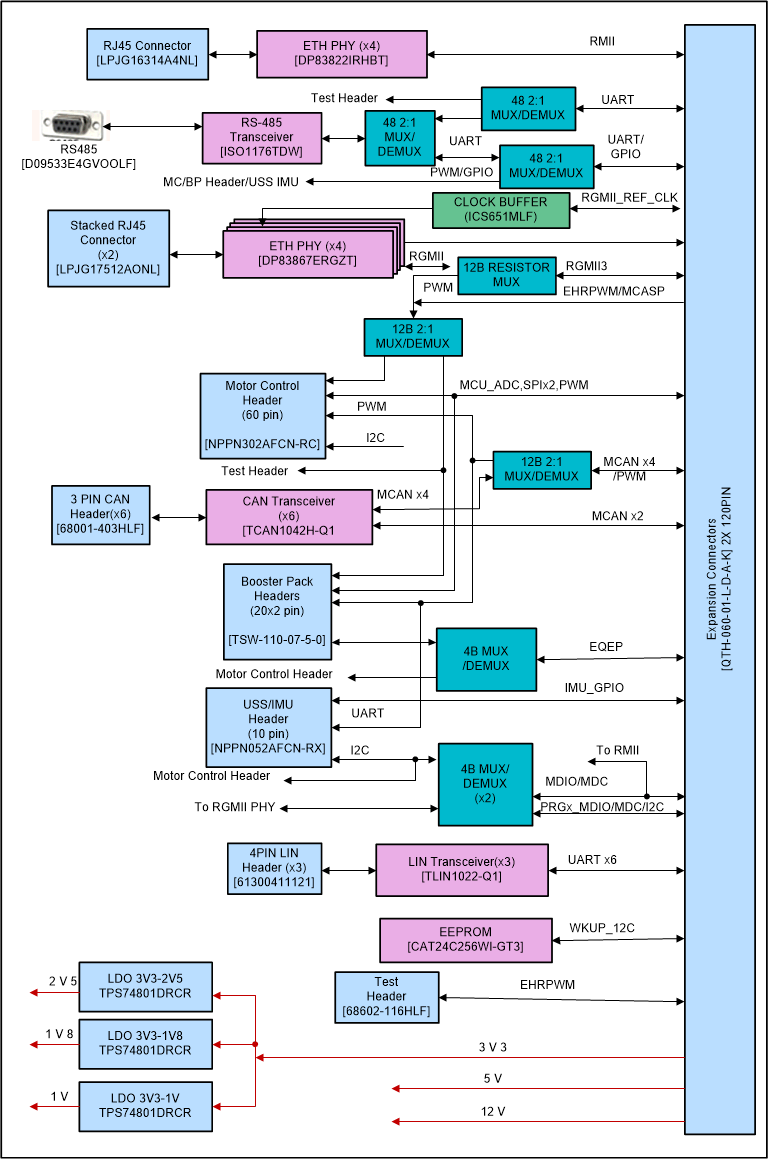SPRUIT1B May 2020 – November 2020
- Trademarks
- 1Introduction
- 2GESI Expansion Board Overview
- 3GESI Expansion Board - User Setup/Configuration
- 4GESI Expansion Board Hardware Architecture
- A Interface Mapping
- B GESI Board GPIO Mapping
- C I2C Address Mapping
- D Revision History
4.1 GESI Expansion Board Hardware Top Level Diagram
Figure 4-1 shows the functional block diagram of the GESI expansion board
 Figure 4-1 Functional Block Diagram of Infotainment Expansion Board
Figure 4-1 Functional Block Diagram of Infotainment Expansion BoardFew of the interfaces shown in the above diagram are specific EVM dependency. All may not be supported in all the Jacinto7 EVM.
For supported interfaces on the specific EVM platform, see Section A.